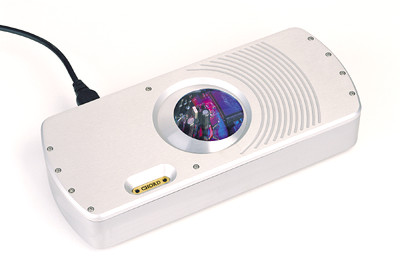The £400 Q-DAC was released in 2013 to capitalize on the success of the award-winning M-DAC from a year or two before. It’s essentially a ‘low calorie’ M-DAC, with a lot of the same wonderful things under the hood but at a lower price point to appeal to a more budget-conscious clientele. Let us not forget that the latter was a work of art – a John Westlake design based on the well-regarded 32-bit ESS Sabre DAC chip with up to 24/192 resolution and seven adjustable digital filter settings for fine-tuning the sound to your preferences.
The Q comes in a lovely aluminium case (247x60x236mm, 3kg) that you wouldn’t anticipate at this price five years ago. All of the functions of the Q-bigger DAC’s sibling have been reduced to a single coaxial, optical, and USB input, as well as the balanced XLR output. This means there’s still a volume control, however it’s now controlled by clunky up/down buttons rather than the more traditional, and easier to use, volume knob. There’s also a 6.3mm headphone jack on the front panel, which comes with its own built-in amplifier. The display, which is still a good OLED, but smaller, is another significant change. When being driven by a CD transport, it can be customized to display CD track and time information via the options menu.
One major drawback is that the remote control has moved up and left, leaving volume control to the cumbersome fascia mounted buttons — making the Q-DAC feel like a completely different beast to handle. Also, the ESS Sabre DAC chip is the lower-spec 9016, rather than the M’s 9018, according to Audiolab, albeit this only makes a little sound difference. Triple cascaded jitter attenuation stages, similar to the M-DAC, ensure that jitter is reduced to an absolute minimum, and the same high-current, high-linearity Class A analogue output stage is used, according to the manufacturer. The Q, like the M-DAC, features an off-board switched mode power supply; Audiolab claims that having a switching power supply in close proximity would be a designer’s nightmare due to the interference it would produce.
When using unbalanced RCA phono connectors, the Q-DAC sounds extremely similar to the more expensive M-DAC; you’d be hard pressed to detect the difference via any well priced speaker, with only a small softening of midband focus and a marginal decrease of depth perspective. The M only notably outperforms the Q when balanced interconnects are used, something the Q cannot achieve. Both DACs worked well with the M-PWR power amplifier, resulting in an extremely detailed, open, and musically pleasurable sound for the money.
What you get is a sound that’s clean and slightly tonally dry, undeniably solid-state in nature but nevertheless amazingly open and melodic. Starting with a TEAC CD transport through coaxial in, I was pleasantly surprised by the sound quality provided by what is practically a £900 DAC/amplifier combo. Hug My Soul by Saint Etienne has a fantastic buoyancy to it, with this classic piece of electronic pop bouncing out of the speakers in an infectiously rhythmic stride. The basslines were quick and snappy, the percussion was compelling, and the Audiolab duo appeared to be having a great time.
Then I moved on to some much richer program material — Isaac Hayes’ “Soulsville” is a fat, thick slice of rare groove, and this small pair made sure I knew about it. There was warmth, air, and space all of a sudden. The recorded acoustic was placed far behind the plane of the speakers, giving the music a wonderfully immersive quality. Hayes’ distinctive voice was a joy to listen to, and there was no strain or brittleness to be found on Compact Disc. Things proceeded ahead slowly but steadily, matching the song’s sorrowful atmosphere. All of this piqued my interest, so it was time to open the tap wide and go for some 24/192 hi-res over USB…
REM’s Texarkana was a joy to listen to. This music is jam-packed with ringing Rickenbacker guitars, and 16-bit can make it grate a little too much. However, a MacBook Pro played a hi-res FLAC rip of the excellent DVD-A disc, which was beautifully smooth and open. This combination once again demonstrated its inherent smoothness; it doesn’t shout at you, and it doesn’t try to capture your attention by putting on an unsubtle, edgy, showy performance. Instead, I got four minutes of the exquisite sound of Messrs. Stipe, Buck, Berry, and Mills having a great time – with Mike Mills’ lovely vocals floating ethereally out of the speakers yards in front of the band.
This small Audiolab sounds consistent and complete, far more mature than its pricing suggests. It’s a fantastic small unit that still feels rather current five years later. As used examples become more common on the secondary market, they become even more valuable. “Why not buy the M-DAC when it’s not that much more expensive?” is the single question that the Q-DAC cannot answer.







